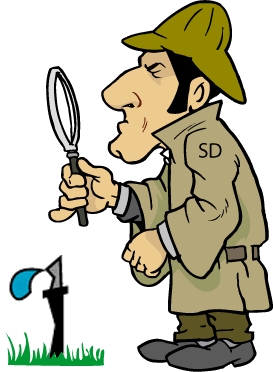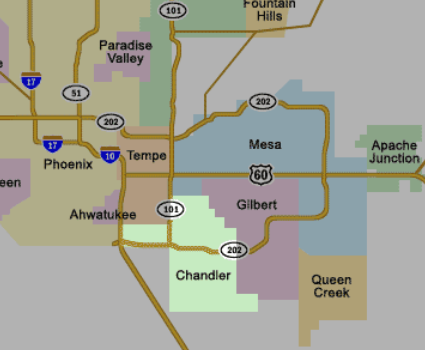Healthy Trees, Plants & Grass
Healthy Trees, Plants & Grass in Arizona
Living in the desert, we often focus on watering as the key to keeping plants healthy. There are many ingredients that go into healthy trees, plants and grass. Some we can control more than others. Here are seven (Soil Aeration, Sunlight, Temperature, Soil, Watering, Planting location and Fertilizer) to consider:
Soil Aeration
Soil aeration is crucial for the health and vitality of plants, including your lawn, as it addresses a common problem: soil compaction. Soil compaction reduces pore space, limiting oxygen flow to roots and trapping carbon dioxide, which can stunt growth.
Aeration creates small holes, allowing essential gases to circulate freely between the soil and atmosphere. You can buy aerate shoes online, use watering needle or use local aerate service.
Sunlight
Living in the Valley of the Sun can make us spoiled by the sunlight we get. While some plants thrive in full sun, others need partial shade or full shade to survive and flourish. It’s important to plant in the right area for sunlight.
Temperature
Phoenix experiences extremely high summer temperatures. Due to this range of temperatures need to match the correct plant for successful growth. Most nurseries will help you identify the best plants for you.
There isn’t any year-round grass. Bermuda grass is dominant warm-season grass. Then it is overseed with ryegrass seed in the fall (Typically late September or early October). This means planting the ryegrass seed directly over the existing Bermuda. There are many hybrids of Bermuda in the Phoenix area, here are some; Midiron, E-Z Turf Midiron, Tifway, TifTuf, Tifgreen, TifGrand, Santa Ana, Bob-Sod, Celebration, Tahoma and more.
Soil
Soil is categorized based on the size of the mineral particles it contains sand, silt, and clay. These particle sizes influence the soil's texture, structure, drainage, water retention, and nutrient availability, which are all important factors for plant growth.
Here are the main types of soil for planting:
I. Sandy soil
Characteristics: Consists primarily of large mineral particles, feeling gritty to the touch. Drains quickly and doesn't hold water or nutrients well.
Challenges: Low water and nutrient retention mean frequent watering and fertilizing are necessary.
Suitable Plants: Good for plants that prefer well-drained conditions, such as root vegetables, cactus, succulents, strawberries, and certain herbs.
II. Clay soil
Characteristics: Composed of very fine particles, giving it a sticky, lumpy feel when wet and making it hard when dry. Retains a lot of moisture and nutrients but drains slowly.
Challenges: Poor drainage can lead to root rot and slow warming in spring. Can be difficult to work with due to its dense nature.
Suitable Plants: Beneficial for water-loving plants and those that thrive in nutrient-rich conditions, like fruit trees, some vegetables, and ornamental shrubs.
III. Silt soil
Characteristics: Particles are smaller than sand but larger than clay, giving it a smooth, soapy, or powdery texture.
Advantages: Offers a good balance of water retention and drainage, retains nutrients well, and is easy to cultivate.
Challenges: Can compact easily if not managed properly.
Suitable Plants: Excellent for a wide range of plants, including most vegetables and fruits, as long as good drainage is maintained.
IV. Loam soil
Characteristics: Considered the ideal soil for most plants, it's a balanced mixture of sand, silt, and clay (ideally around 40% sand, 40% silt, and 20% clay).
Advantages: Excellent water retention and drainage, good aeration, rich in nutrients, and easy to work with.
Challenges: Requires regular replenishment of organic matter to maintain its vitality.
Suitable Plants: Ideal for most vegetables, flowers, shrubs, and trees.
V. Peat soil
Characteristics: Rich in organic matter, often dark brown or black, acidic, and retains a lot of water.
Challenges: Can be waterlogged and naturally acidic, which may limit the types of plants that thrive.
Suitable Plants: Preferred by plants that tolerate acidic conditions like rhododendrons, heather, and some legumes.
VI. Chalky soil
Characteristics: Contains high levels of calcium carbonate, making it alkaline. Can be stony and drains quickly.
Challenges: Poor water retention and can hinder nutrient absorption for some plants.
Suitable Plants: Some plants tolerant of alkaline conditions, such as lilacs, weigela, spinach, and sweet corn.
* Identifying your soil type.
You can get a general idea of your soil type with these simple tests:
⦁ Feel Test: Take a handful of moist soil and rub it between your fingers. Sandy soil feels gritty, clay soil feels sticky and lumpy, and silt soil feels smooth and soft.
⦁ Ball Test: Squeeze a moist soil sample into a ball. If it holds its shape but crumbles when poked, it's likely loam. If it remains intact, it's probably clay. If it falls apart, it's sandy.
⦁ Jar Test: A more precise method involves placing a soil sample in a jar with water and letting it settle to observe the layers of sand, silt, and clay.
⦁ Some nurseries offer Soil Analysis and testing. Also making soil blend for your needs from the analysis and testing.
Watering
There are various methods to water trees, plants, and grass, but proper watering leads to more efficient water use and improves resistance to heat and disease. Better placement of roots.
The "Sprinkler Detective" method focuses on maintaining a consistent watering duration once the ideal amount has been determined. This means you adjust the frequency of watering based on factors like how much water is being absorbed by the plants and how much is evaporating due to the season. For example, during hotter, drier periods, you would water more frequently, while in cooler or rainy seasons, you would decrease the frequency.
Here are three methods, ranging from basic to scientific, to determine how much to water.
⦁ Brown bad, green good Technique
Meaning water, it more, more often if it looks like it is doing poor.
⦁ Watering Needle Technique
Measure the depth of the watering using watering needle.
You can purchase Water Needles online or at local hardware stores. It can come with dual purpose which is better, like deep watering plants and trees with it. An hour after watering trees, plants or grass. Push your watering needle into the watered area. The needle should go into the ground easily where the water exists and becomes hard to push when dry soil is reached. This will give you depth of where water is sitting at. This is the importance of good soil (Loam is target). Too sanding and the water passes where we want the roots at, and too clay and the water isn’t getting absorbed.
Here’s the targets, also reflex where the roots should be at:
- Grass 6-8 inches Deep
- Plant 1-3’ feet Deep
- Tree 3-5’ feet Deep
Cup/Bucket Technique
Place small cups through the grass area. Run the grass zone for 10 minutes, measure the amount of water collected in each cup and average them out. Target ¾” of water for each time yard is watered. If you measure ¼” in 10 minutes of running the zone, will need to set timer for 30 minutes to get ¾” of watering.
For Plants and Trees place the emitter (end of dripline) in 5 gallon bucket and run for hour to get rate per hour. Set timer to get the following amounts:
Plants 1-3 gallons
Trees 60-200 gallons
*Most emitters are color coded; Black/ Blue – 1gph, Red – 2gph and Yellow – 3 gph
Planting Location
Protection from elements, such as planting to close to block walls that will absorb heat in the summer making it hard on the plants to survive. Or planting large tree like Ash next to house, where it will outgrow the area very shortly. Little research will go a long ways to protecting your investment.
Food
A common mistake in plant health is neglecting regular feeding of trees, plants, and grass. Desert soil lacks natural nutrients, and nursery fertilizer usually only lasts about a year. To maintain healthy growth, fertilize grass monthly with a quality feed-and-weed product. For plants, use a spray fertilizer with a hose nozzle or pour liquid fertilizer from a bucket once a month. Sprinkler Detective also offers automatic fertilization system installation.
Interested In Our Services?
Get In Touch
Have questions or need to schedule a sprinkler repair? We're here to help! Contact Sprinkler Detective to speak with our team of irrigation experts and get the reliable service you need. Reach out today and let us make your sprinkler system run like new!
Call: (480) 345-1800 to schedule a service!


